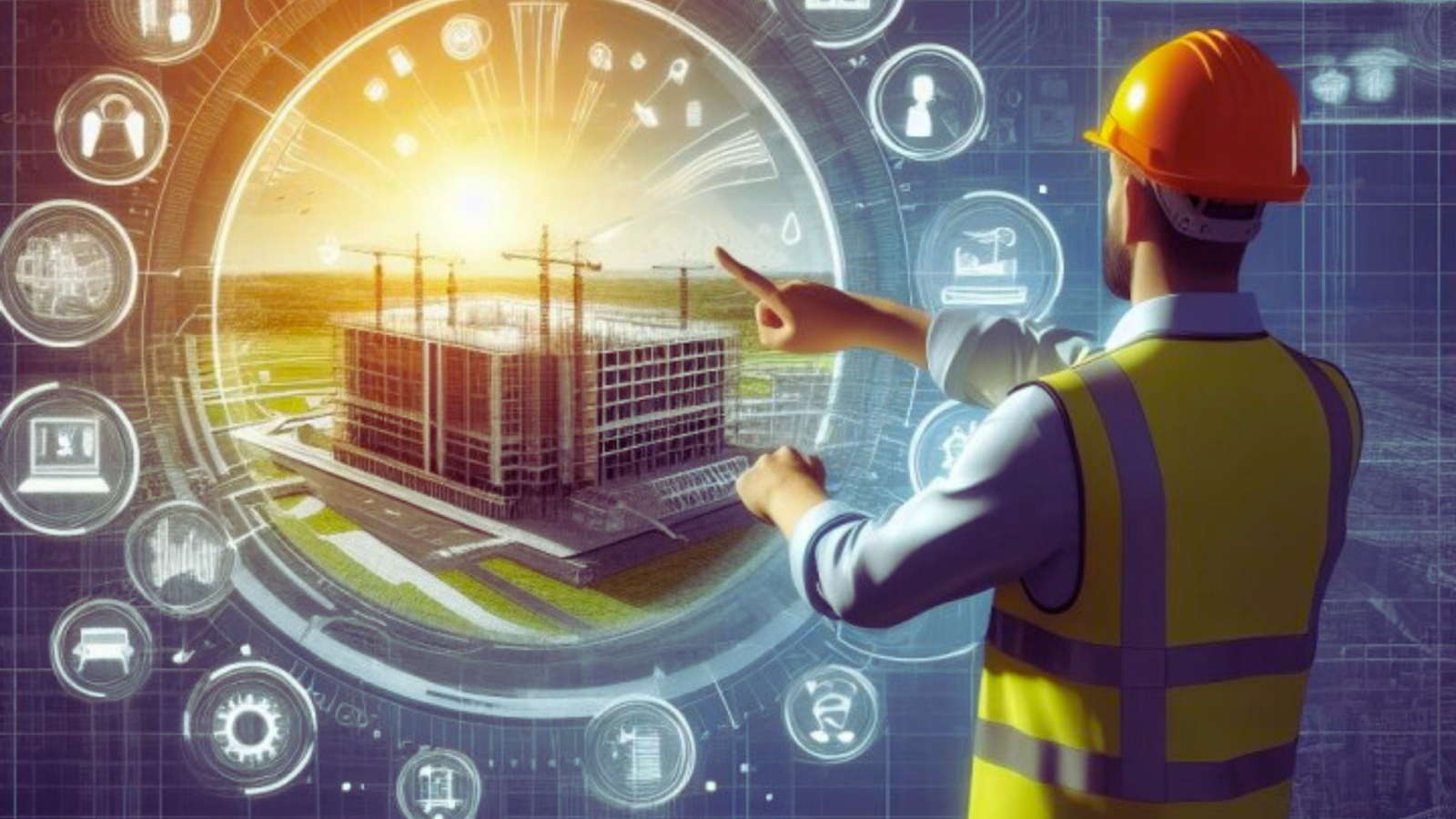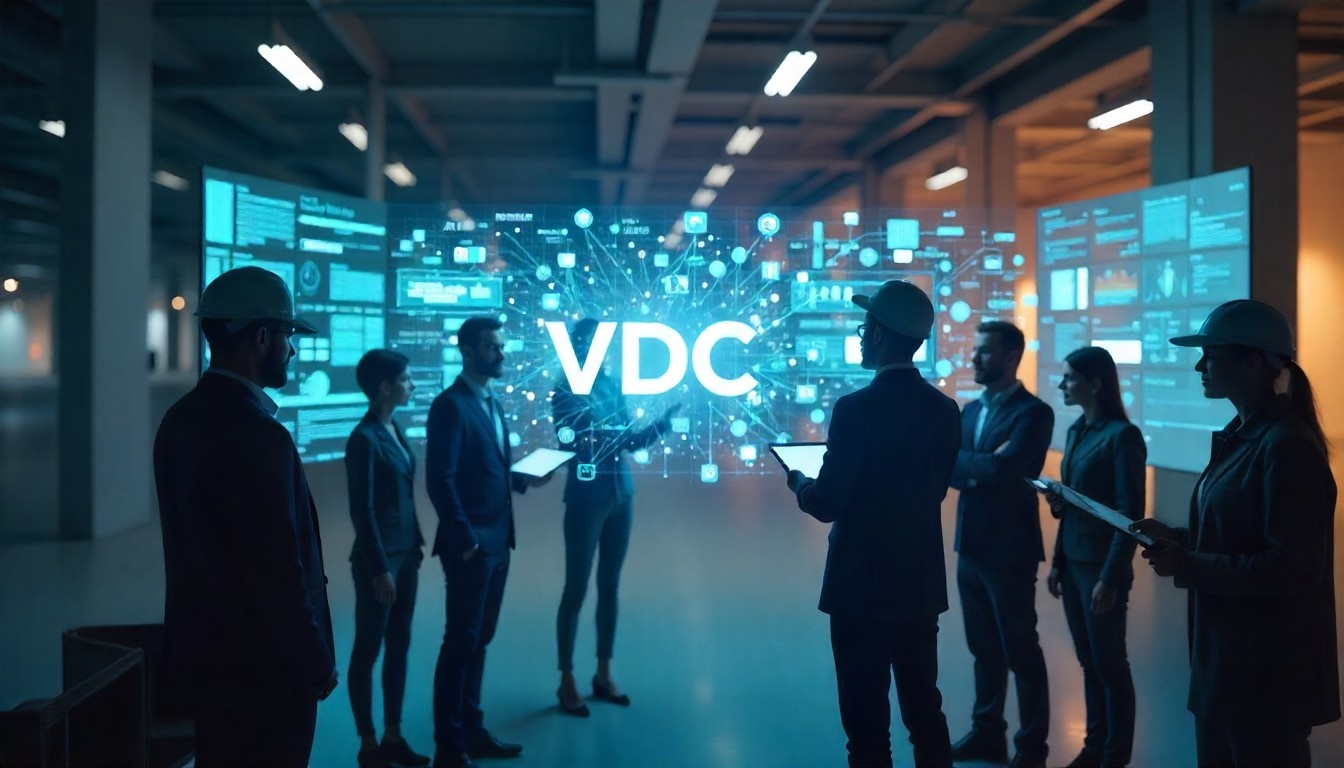
Introduction to VDC in Construction
Just imagine you are working on a project, and after every review meeting, you need to start the project from scratch. Yes, that's what the construction industry professionals were facing with the traditional 2D drawing. Not only this, but they faced challenges such as fragmented workflows, low productivity, and frequent cost and schedule overruns. Results in miscommunication, errors, and costly rework during construction.
To overcome these challenges, the industry has now incorporated a methodology that has replaced the traditional 2D paper-based workflow with a digital, data-rich collaborative environment known as Virtual Design and Construction (VDC). Solving complex coordination issues before they become expensive on-site problems.
In this article, we will explore different horizons of VDC and understand why VDC is important, its components, benefits, real-world applications, challenges, and future trends. Making it a go-to guide to learn & understand about this methodology.
What is Virtual Design and Construction (VDC)?
Virtual design and construction (VDC) is a project management methodology that integrates the BIM with workflows and strategic objectives. The VDC provides a structured framework to align people, processes, and technologies. Unlike traditional methods that rely on 2D drawings, VDC integrates 3D models, project schedules, cost estimates, and workflows into a unified digital platform.
The primary objective of the virtual design and construction (VDC):
- Enhance project visualization.
- Establish collaboration among all stakeholders.
- Identify & resolve clashes early.
- Optimize project schedules & budgets.
Components of VDC in Construction
As we discussed, about Virtual Design and Construction (VDC), now we will decode three interdependent components, which comprise one to form VDC: Building Information Modeling (BIM), Integrated Concurrent Engineering (ICE), and Product Production Management (PPM). Let's discuss these three components in detail, one by one.
Building Information Modeling (BIM)
It is a 3D model comprised of a data-rich, collaborative process that enables all stakeholders in a project to work on a shared digital representation of an infrastructure asset.
BIM Dimensions in VDC
- 3D BIM Modeling: Visual representation of the facility.
- 4D BIM Modeling: Integrate schedule (time) to visual representation.
- 5D BIM Modeling: Adds cost & quantity information to the 3D model with schedule information.
- 6D BIM Modeling: It incorporates operational information for post-construction management (facility management).
Integrated Concurrent Engineering (ICE)
It's a collaborative methodology for real-time, coordinated decision-making through virtual sessions across all stakeholders (architects, engineers, contractors, and owners).
It not only helps in real-time coordination but also helps address the multidisciplinary issues more efficiently before they reach the construction site.
Product Production Management (PPM)
PPM applies principles that optimize construction workflows and focus on reducing waste & improving efficiency. In other words, it focuses on efficient planning of resources, materials, and labour to enhance the quality of construction projects.
Key practices included in Product Production Management (PPM) are:
- Prefabrication & Modularization: Manufacturing components off-site to ensure fast on-site assembly
- Work Structuring: Breaking a big project into smaller and manageable work packages to ensure the work is completed on time with a reliable workflow.
- Last Planner System (LPS): A collaborative planning system to reduce delays & rework.
Benefits of VDC in Construction Projects
We learnt about the component in the previous section; here, we will discuss the benefits of virtual design and construction. And discover how it enables you to manage projects even better and ensure a smooth route to a successful project.
So let's discuss the benefits of the VDC:
- Improved Collaboration: Enables all stakeholders to access the latest information through centralised data.
- Enhanced Project Visualization: VDC allows visualization of design intent & understanding of complex systems before construction begins.
- Clash Detection & Reduced Rework: VDC helps to resolve clashes among structural, MEP, & architectural elements early.
- Time & Cost Savings: With accurate simulations and planning, VDC ensures effective savings and timely project delivery.
- Better Risk Management: VDC helps you anticipate potential risks so that you can ensure safety before something happens.
VDC vs Traditional Construction Methods
To understand why VDC plays a crucial role, you need to understand the difference between the traditional construction method and VDC. Here is a clear bifurcation of both:
VDC vs BIM: What’s the Difference?
Let's understand the difference between virtual design and construction & building information modeling in detail:
Applications of VDC in the Construction Industry
- Design Visualization & Virtual Mock-ups: The foremost application of the VDC is high-fidelity 3D visualizations, VR, and AR walkthroughs. Ensuring a real-life experience before the construction begins.
- VDC Coordination & Clash Detection: These help in automated clash detection & resolution across different disciplines: architectural, structural & MEP. Ensuring a reduction in costly reworks and saving time.
- Scheduling & 4D Modeling: Linking the 3D model with construction scheduling information helps you optimize the logistics, deliveries & resource allocation.
- 5D Cost Estimation: Embedded BIM data generates precise material quantities for cost estimates.
- Fabrication & Prefabrication: Using the model data to generate shop drawings and fabrication data.
- Stakeholder Coordination: Enhance the coordination among the stakeholders as they use the accurate and latest version of the model simultaneously.
Challenges in Implementing VDC in Construction
- High Initial Investment: limiting small firms' investment in software (e.g., Revit, Navisworks, costing programs), hardware & skilled personnel initially.
- Skill Gap: the limited number of trained & qualified VDC coordination staff makes it difficult to implement VDC effectively.
- Resistance to Change: The experienced professional shows resistance to adopting new technology because they rely heavily on traditional methods.
- Interoperability Issues: Sharing data seamlessly makes it a little difficult, as different stakeholders use different software.
- Data Management Complexity: It is difficult to maintain large datasets produced by the VDC (4D/5D/6D, point clouds) & requires robust protocols.
The Future of VDC in Construction

AI & Machine Learning: AI will be integrated to automate repetitive VDC tasks, ensuring fast & accurate data-driven project delivery.
Digital Twins (6D/7D) will help us with a real-time, virtual replica of the physical asset for maintenance and optimizing the asset performance
Expanded Reality (VR/AR/MR): AR glasses could overlay the digital model onto the physical site, guiding workers' installation.
Offsite Manufacturing Integration: Further strengthen the link between design and prefabrication, creating a seamless, data-driven supply chain.
Autonomous Construction: Integration with robotics, drones, and autonomous construction vehicles will help us make the construction autonomous.
Conclusion: Why VDC Matters in Modern Construction
In this article, we learnt about what Virtual Design and Construction (VDC) is and how it helps us to enhance our project. The final verdict of this article is that VDC is the fundamental operating system for modern, high-performance construction. The strategic framework enables modern construction to be efficient, predictable, and high-quality. It doesn't stop here; it enables project teams to make better decisions earlier, ensuring that complex projects are delivered on time, within budget, and to the highest quality standards.
FAQs:
1. What is VDC in construction?
Virtual Design and Construction is a comprehensive methodology that utilizes Building Information Modeling (BIM) to virtually model, plan, and coordinate a construction project.
2. How does VDC differ from BIM?
VDC (Virtual Design and Construction) is a methodology, & BIM (Building Information Modeling) is a tool.
3. What are the benefits of Virtual Design and Construction?
The benefits of VDC are improved collaboration, enhanced project visualisation, clash detection & reduced rework, time & cost savings, and better risk management.
Why is VDC important in modern construction projects?
It directly addresses the construction industry's biggest pain points:
- low productivity
- fragmentation
- high risk of cost/schedule overruns.
4. What challenges do companies face when implementing VDC?
- High Initial Investment:
- Skill Gap
- Resistance to Change
- Interoperability Issues
- Data Management Complexity
5. Is VDC suitable for all types of construction projects?
Yes, VDC is suitable for all types of construction projects.
6. How does VDC improve collaboration in construction?
By providing a digital environment for all stakeholders to refer to the accurate and latest model.
7. What technologies are used in Virtual Design and Construction?
BIM software, 4D/5D modeling, clash detection tools, VR/AR, and reality capture with laser scanning.
8. How does VDC save costs in construction projects?
VDC prevents on-site errors, optimizes schedules, and reduces costly errors.




